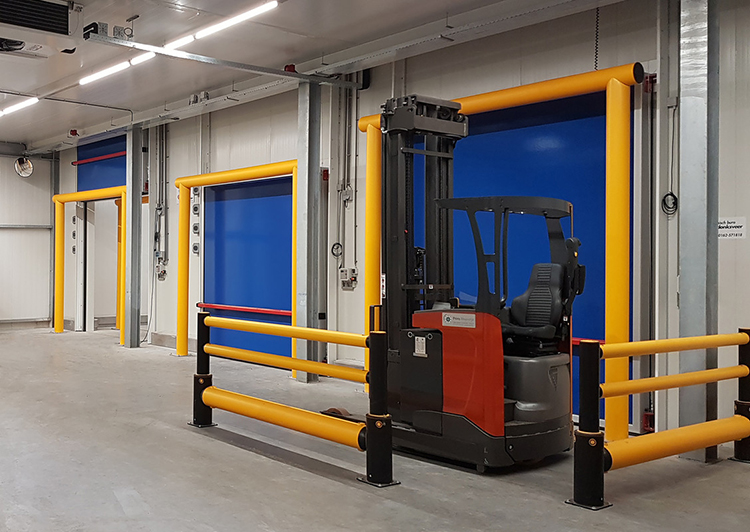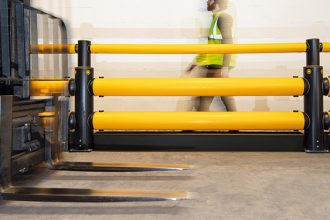Protect High Height Infrastructure With These Four Solutions
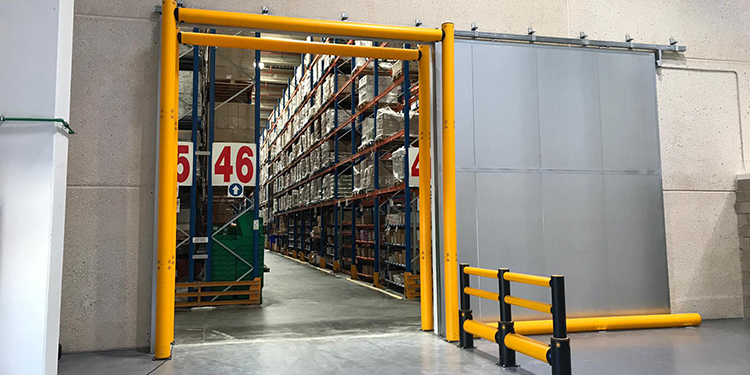
Elevated walkways, overhead conveyor systems, work platforms, facility structures, and dock doors—all can be vulnerable to impacts from forklifts. If an operator forgets to lower their load or is driving a taller-masted vehicle, these areas are at risk of a damage-causing collision. There are, however, several options available from the members of the Protective Guarding Manufacturers Association (ProGMA) to safeguard these overhead structures and components. Here are four solutions that protect high height infrastructure.
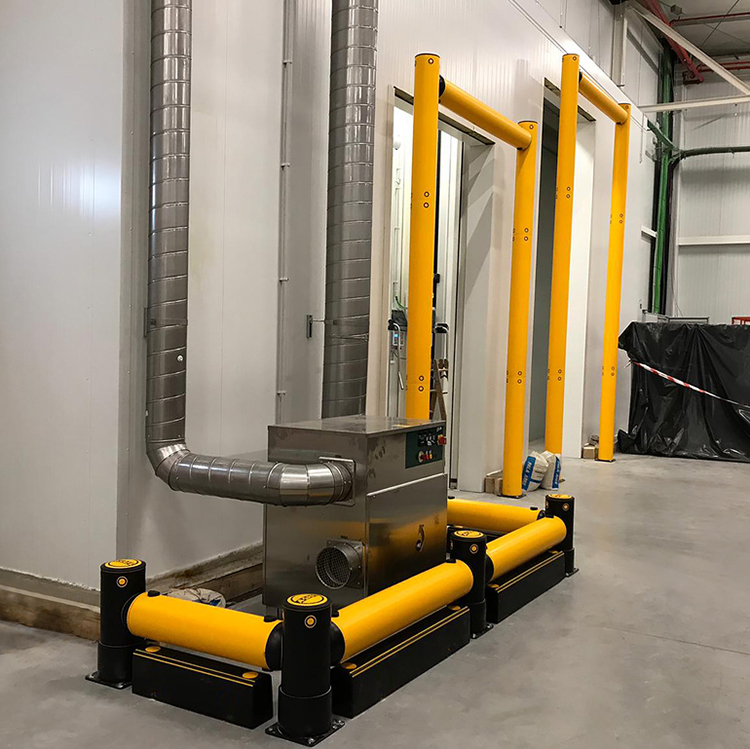
Solution # 1: Height Restrictors
Height restrictors, usually supplied in highly visible safety yellow, provide forklift operators with a visual indication of height limits as they maneuver vehicles and loads. Their design and construction physically prevent the vehicle from contacting vulnerable structures just beyond the height restrictor. The vulnerable structures include doorways, access points, or dock doors. Height restrictors can also protect door frames, doorway edges, dock door channels, roll-up door containers, overhead conveyors, and elevated platforms and walkways.
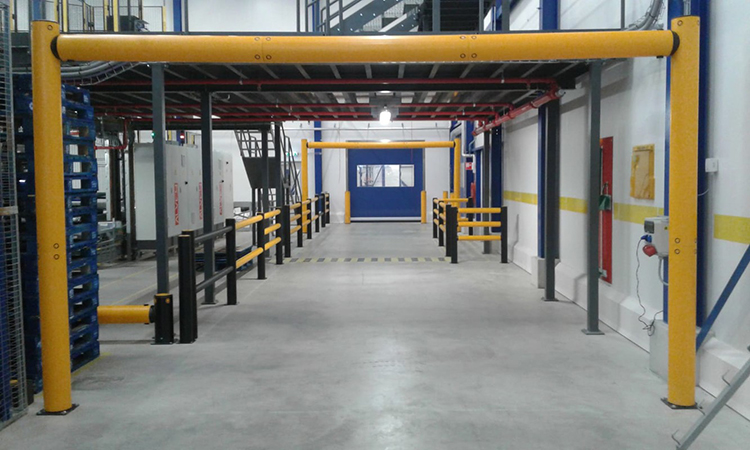
Comprised of two floor-mounted vertical posts and an overhead horizontal beam, height restrictors come in standard and custom heights, said Paul Barlow, CEO of A-SAFE USA, a ProGMA member.
“In lower ceiling facilities, height restrictors can also protect overhead structures, such as pipe bridges, cable trays, ventilation ducts, and gas supply lines,” he noted. “Some operations also use them to prevent larger equipment from entering certain areas or zones. The height of the restrictor only allows pallet jacks to pass under it while blocking masted vehicles, for example.”
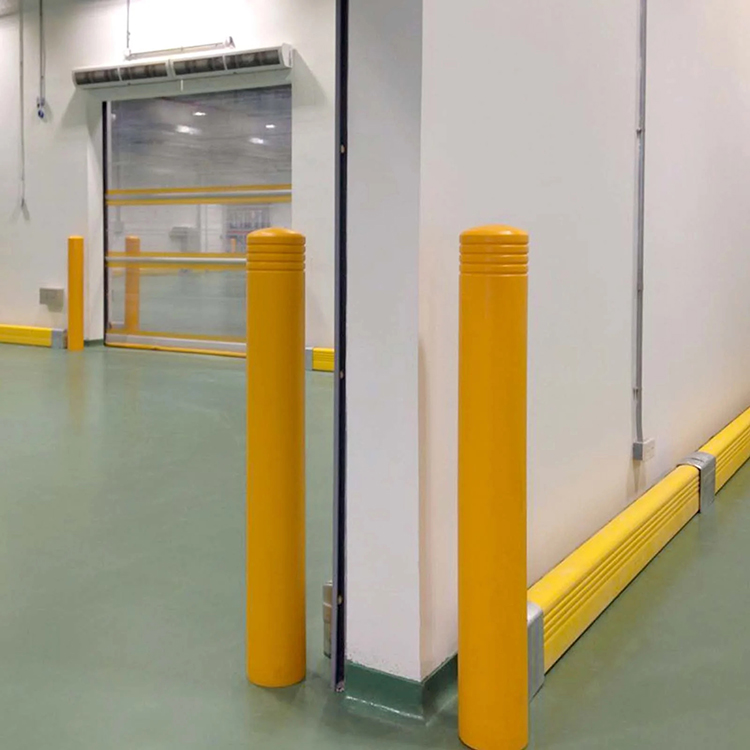
Solution # 2: Floor-Mounted Bollards
Another way to prevent a forklift from striking overhead structures is to mount highly visible bollards or barriers on the floor beneath, or in close proximity to, the area of concern above.
“Mounting a physical restraint, like a bollard or barrier, on the floor inhibits the vehicle from passing beneath the high height infrastructure,” explained Barlow. “It simply prohibits the vehicle from coming close to that area, such as overhead cross bracing for seismic protection in a facility structure, or in racking.”
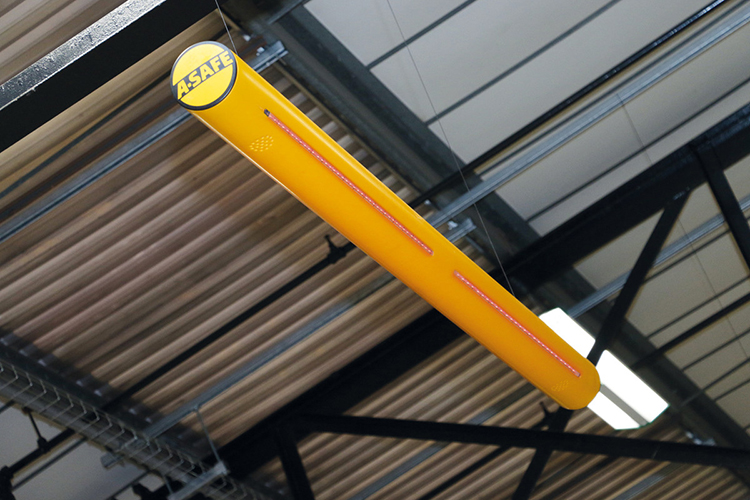
Solution # 3: Suspended Overhead Alarm or Clatter Bars
As an alternative to using a floor-mounted barrier to physically stop vehicles, it is also possible to suspend a horizontal bar from overhead to indicate clearance. Typically sporting a safety yellow finish for high visibility, these bars visibly signal that an overhead obstruction is in a forklift’s upcoming path.
“Suspended overhead bars cannot physically prevent a forklift from hitting the vulnerable area behind it,” Barlow noted. “However, because they are typically mounted six to 10 feet in front of the obstacle, the operator has time to stop after impacting the bar and before impacting the equipment you’re trying to protect—be it a pipe, a walkway, et cetera.”
Some of these bars house pellets or beads inside to generate noise (or clatter) when struck. Others incorporate powered technologies. For example, they can house sensors that detect contact. An impact triggers integrated LED lights and/or sound alarms to flash and emit noise. These visual and audible cues further protect high height infrastructure by prompting the operator stop and redirect the vehicle.
Certain alarm bars feature self-contained battery power with no external wiring required, Barlow added. “That significantly increases flexibility when locating the bars because they don’t require hardwired power run throughout a building.”
Solution # 4: Sensor Beams and Alarm Systems
Similar to light curtains that protect employees from reaching into hazardous machinery or areas housing moving equipment, sensor beam systems can also protect high height infrastructure.
In these systems, a pair of devices consisting of a transmitter and a receiver generates a beam of light. Placed several feet ahead of the overhead obstruction, the device mounts sit at a height above permitted vehicle and foot traffic. When a forklift with an extended load breaks the beam of light, the system triggers audible and/or visual alarms. This alerts the operator to stop before impacting the protected overhead area.
“These systems require power and routine calibration to ensure the beam remains in continuous operation,” added Barlow. “So their installation and maintenance can be a little more involved. But in certain applications they are an ideal choice.”
Repeated Training Also Helps Protect High Height Infrastructure
While each of these four guarding solutions helps protect high height infrastructure, nothing replaces continuous, repetitive training about safe navigation through an operation.
“It is absolutely critical to train forklift operators and warehouse personnel how to safely maneuver vehicles—with or without loads,” Barlow said. “Regularly train new and existing employees on driving at proper speeds, traveling with a load only slightly elevated off the floor, and avoiding areas with high impact risks. Those measures will significantly reduce the chance of an accidental overhead impact.”
Looking for more information about how to protect high height infrastructure and other key areas in your facility? The members of the Protective Guarding Manufacturers Association (ProGMA) are available for guidance and recommendations.


